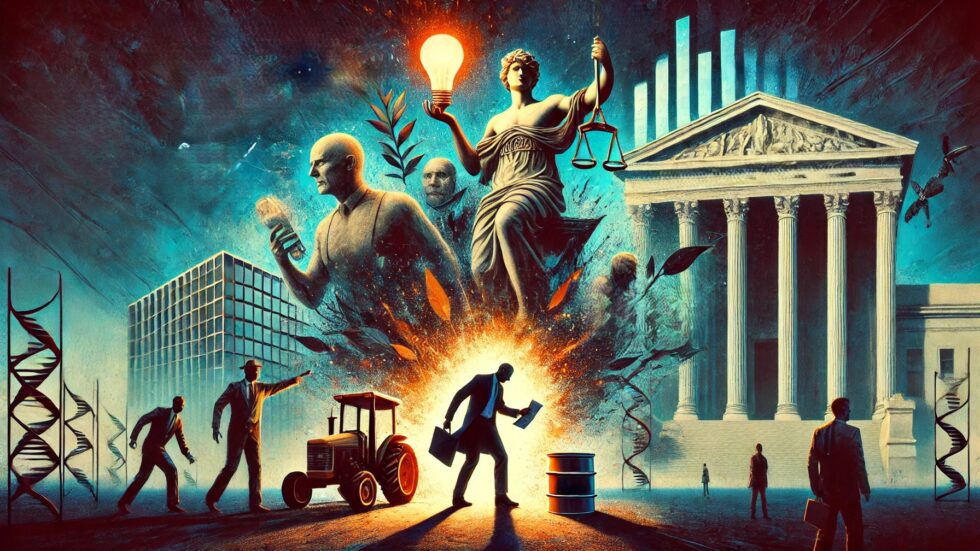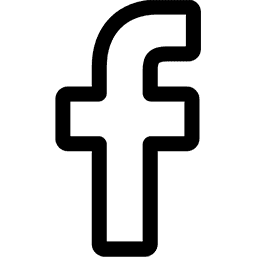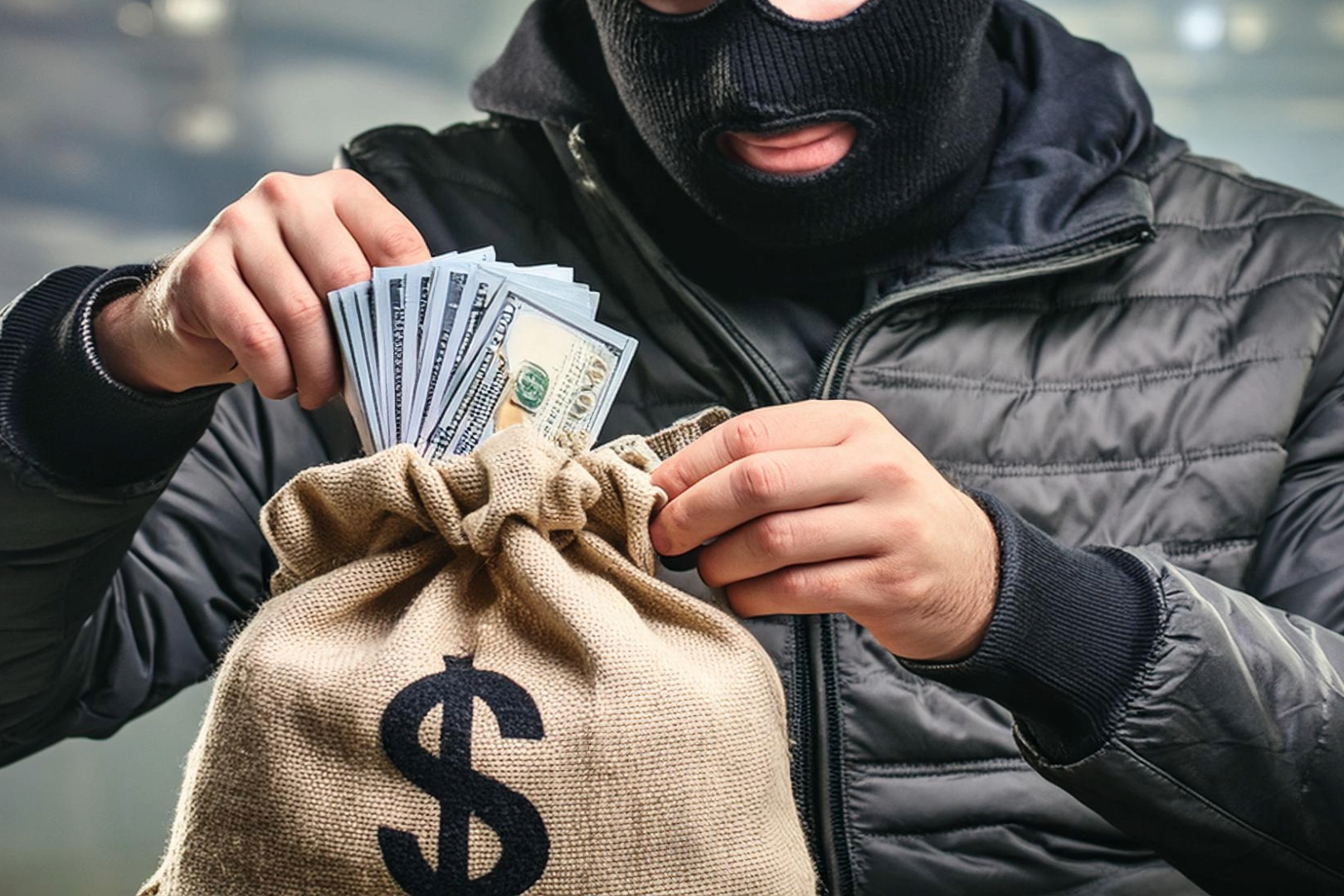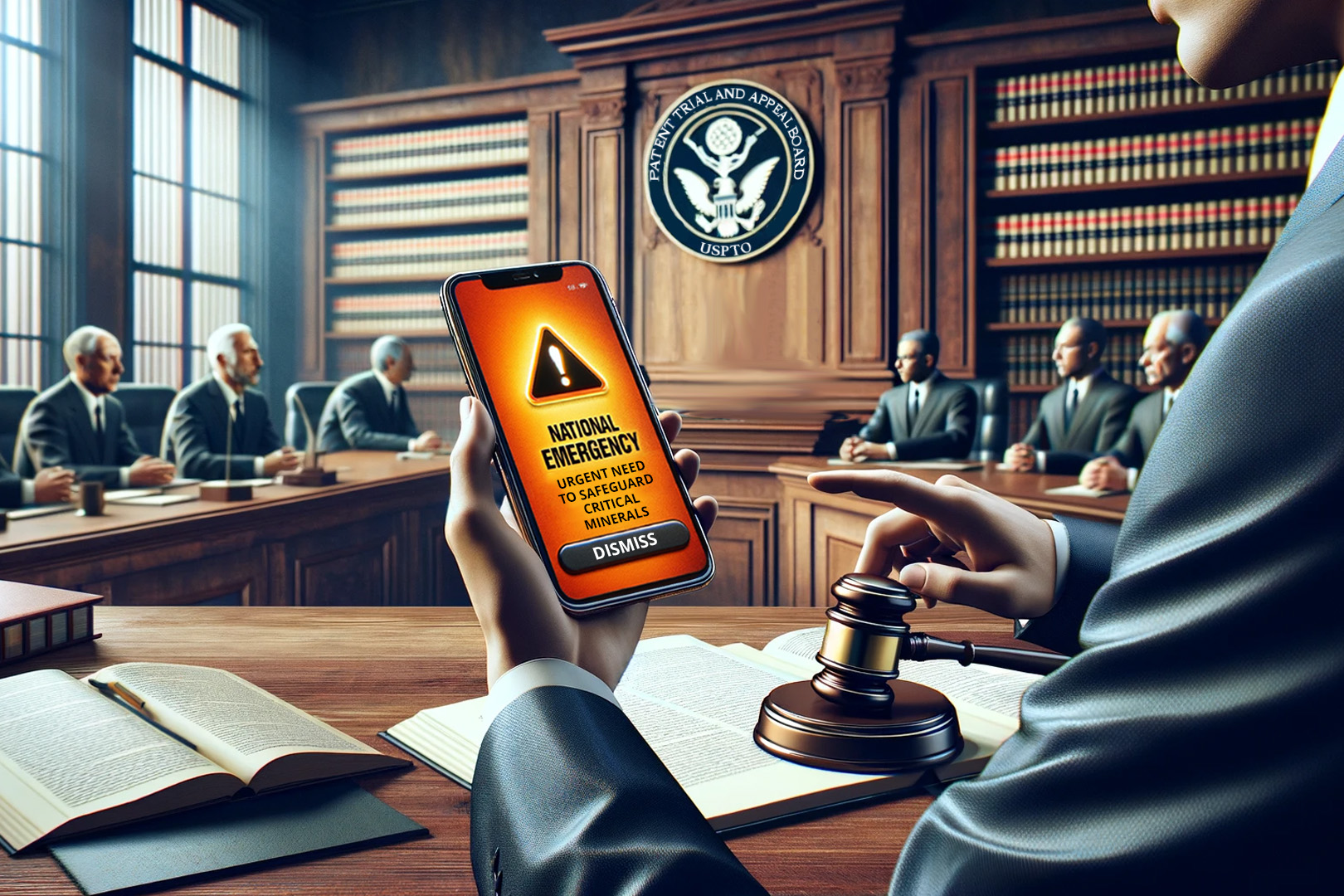
With Robert Kennedy, Jr. making the rounds in Congress for his confirmation, many institutions do not like what he has to say about the American food industry, the ag industry, the pharmaceutical industry, the fast-food industry, and more. President Trump has stated that the health of our nation is something that must be addressed, and Bobby feels that something has to be done regarding the many special interests profiting from decades of maltreatment, malnourishment, and malpractice against the American people.
Long Time Neglect
Our patent system is also suffering from the effects of decades of neglect by the Supreme Court, Congressional subterfuge, and relentless attacks by the tech industry, hell-bent on undermining the patent system for their own gain. To big tech, it is easier to manipulate the law than to tolerate a robust patent system that rewards all innovators. They want to eliminate the competition early on, whether by litigation or Congressional lobbying, keeping the patent system unfair and unhealthy.
Even though patent rights are laid out in the Constitution and a key part of our success as a nation, for the last two decades, the Supreme Court has nonetheless crippled those rights. The Court, indeed, has trouble appreciating the value of patent rights and seems to neither comprehend nor care about the importance of a viable and healthy patent system to our society.
For example, the injunction right had long been a powerful inventor right. Akin to laws regarding trespass and theft, an inventor can invoke their exclusive rights to stop another person or company from taking or using the patented technology. Even though this injunctive right was nearly absolute for patent owners, two decades ago, the Court diminished the right, in essence saying that, before stopping the trespasser or thief, we should hear them out, even though they took something without authorization. This excuse for thievery is manifest in the Court’s more recent Google v. Oracle decision, a copyright infringement case, where the Court rather creatively and quite wrongfully redefined what was protectable to the point of valuelessness, exculpating the direct misappropriation or theft of Oracle’s intellectual property.
The Abstraction Virus Becomes an Epidemic
Worse, the court has participated in the undermining of the patent system by not clarifying its own misguided law. Section 101 of the Patent Act was once a very minor statute, a coarse filter, i.e., almost all inventions were eligible to enter the patent process, which already included strong measures to weed out weak or vague inventions. Indeed, applicants for patents were rarely denied entry outright because the inventions were too “abstract” since the other strict requirements of novelty, nonobviousness, and other constraints would easily handle this. But modern technologies have gotten quite abstract and getting more so, e.g., AI, and some companies, primarily tech companies, directed their attacks, like a virus, at this innocuous intake statute, infecting the Supreme Court with the abstraction virus.
Through their Mayo and Alice decisions, the Supreme Court Justices wrestled with the idea of abstraction but could not capture it. Like obscenity, you know it when you see it but cannot adequately define this elusive quality. Yet, the Court nonetheless unmoored the historically narrow abstraction test to now apply to all innovations, and the Federal Circuit has slavishly followed suit, applying the Court’s statements in a manner almost uniformly hostile to patents. Akin to making quantum mechanics apply to large objects, physical devices can be blithely categorized as abstractions and, thereby, not patentable. Indeed, even trucks have been deemed an abstraction under this doctrine. The virus has spread.
By not treating this abstraction virus in any subsequent decision (or inoculating us from this pernicious viral view), and despite over a decade of begging by the patent bar for clarity, all of the innovation has been exposed, subject to the vagaries of this infernal infestation. For example, many critical therapeutics and therapeutic treatments, by virtue of the Court’s loose abstraction analysis, are now deemed too abstract and unpatentable. Software, AI, and many physical devices are often subject to this ill-treatment. Much of America’s cutting- and bleeding-edge innovation is almost per se unpatentable, regardless of the value of the technology to society. China and Europe, however, do not have this illness, and many innovations rejected here are fully patentable there, with R&D moving there. Since the Supreme Court refuses to elaborate and correct the damage they have done, providing medicine as it were, they are to blame.
A Self-inflicted Problem
Congress is also to blame. In 2011, the America Invents Act (AIA) was shoved down the throats of Americans like a large pill. At that time, the legislation proposed had many flaws, e.g., multiple patent challenges were permissible without end. But, the tech industry, then aided foolishly by biopharma, pushed the bill through, and President Obama signed it into law. Tech companies were very pleased because they now had another venue to attack patents and take technologies.
For example, in addition to the federal district court, which governed most patent challenges for over 200 years, the AIA allowed direct challenge of any patent through a new administrative court created within the United States Patent & Trademark Office (USPTO), i.e., the Patent Trial & Appeal Board (PTAB). Very quickly after its institution, the PTAB judges were likened to “death squads” since the great majority of patents litigated there were invalidated. Since the Supreme Court’s Mayo and Alice decisions, the anti-patent epidemic has grown, and the value of patents diminished.
With patents often being the only assets in startup companies, it is disheartening that the patent system has been reconfigured by the Court, Congress, and big tech to attack itself; in a way, our own antibodies attack our creations, and ingenuity suffers. This undermines the entire patent paradigm.
Restore Fairness
To restore America’s patent system, it’s crucial that the new Republican leadership live up to their core principles of promoting innovation, protecting property rights, and supporting entrepreneurship. A key step would be appointing a USPTO Director who is independent of industry influence and understands the value of encouraging all types of innovation, from individual inventors to corporate employees.
The small inventor community, often the most creative source of innovation, has been sidelined by the Court, Congress, and big tech interests. Strengthening the patent system to ensure fair access for all inventors—not just the well-funded—aligns with the values of fairness and economic opportunity that the party advocates.
Now is the time for leadership to restore the patent system and protect American ingenuity, ensuring that the foundational principles laid out by our Founders are upheld. With the right laws and appointments, we can revitalize the patent system, benefiting inventors, businesses, and the broader economy.
Raymond Van Dyke is an IP/Patent Attorney and Educator. In his practice, he helps a variety of clients in their IP matters. He specializes in patent and trademark matters in various technologies, litigation, licensing, and procurement. After being a partner in big firms, he started his own IP consultancy in Washington, DC, with diverse domestic and international clientele and technologies, handling matters at the USPTO, Federal Circuit, and local State and Federal courts. He is an Adjunct Professor at George Washington University and teaches IP courses for engineers, business people, and other professionals at the University of Maryland and George Mason University; also teaches about the history and philosophy of IP, the history of technology, famous inventors and deals, etc. He has also taught at Southern Methodist University, American University, and across the world. Ray also teaches at NIH and other institutions. He is the Senior Vice President of Special Events at LES and Chair of the LES DC Chapter; an AIPLA Fellow and former Chair of a number of Committees; Chair of the Montgomery County Bar Association IP Section, former Board Member of the DC Chapter of the ACM, former Board Member of ITechLaw (Computer Law Association); and continues his involvement in IPO, the MSBA, AIPPI, ABA, BIO, IEEE and other legal and technical organizations. Ray got his BS and MS in Computer Science and a law degree from the University of North Carolina at Chapel Hill. He is licensed to practice in DC, MD, NY, NJ, and TX, as well as the USPTO, and is admitted to the U.S. Supreme Court, Federal, Second, Third, Fourth, and Fifth Circuit Courts, and a number of District Courts, Court of International Trade and Federal Court of Claims. Ray also continues in his efforts to fight on behalf of the small inventor community in protecting the principles of the patent system.







I agree that the AIA did more harm than good but you are throwing out the baby with the bath. The real culprits in this mess are incompetent patent attorneys who copy and paste canned recipes into their claim constructions and specifications. Bloated specifications with materials copied from other patents under the guise of “doing some work for the client” are perfect red flags for the PTAB. But it’s easy to blame the legislation because who are they anyway?
Arguably, you have a point but it’s not the root cause for the problem. The problem is inventors looking for “inexpensive patent attorneys” who are money out the window. Yes you can get a patent and it is not worth the paper it is printed on unless you get a quality counsel who has worked in litigation and defense and structures the patent from the very beginning to be more than a wall hanger.
Pardon my bluntness but that’s what it comes down to in reality
So after 200 years of patent attorneys acting prudently in 2011, they suddenly started to copy and create a mess. No PTAB, Not even USPTO examiners issuing patents so easily invalidated by PTAB (Initially 95%) now 84% invalidation rate The culprits are PATENT ATTORNEYS. BEWARE!!
Jacek and Michael: your points are well taken. The issues are indeed more nuanced, but the reality is that the patent system has tilted seriously in favor of well-funded companies. The AIA can be amended to make it fairer, e.g., the same burden of proof as in federal courts – we can keep the baby as it were. Blithely blaming patent attorneys (in favor of instead using litigators) is rather rich. Patent attorneys strive to get their clients patent rights. – it is the broader socio-economic system that diminishes the value of those rights through taking. Why don’t you just blame inventors for coming up with ‘unworthy” inventions? As for the high invalidation rate (death squads), you insinuate that each and every one of those patents invalidated (more than half of which would likely survive a court challenge) is inherently worthless – ignoring the numerous therapeutic and other life-changing innovations of the Cleveland Clinic and others lost by 101 challenges alone. Like a bank radically changing their lending laws to favor only certain groups, there is inherent unfairness here that must be addressed. Our world is more abstract, and instead of relying on the rigors of the patent system itself (novelty, obviousness, etc.) to be a corrective to new technologies, you feel it just that hundreds of thousands of innovations are dismissed outright by PTAB judges (and district court judges taking an easy dismissal to clear a complex patent case off their docket) using the 101 abstraction moniker (Looks obvious/abstract to me!). The patent system is for everyone, not just for those with a war chest. Can patent attorneys be better at what they do? Certainly. I wrote a patent that another attorney asserted, and it survived many dozens of challenges. But, recently at the PTAB, I witnessed an invention dismissed under very dubious reasoning. Systemic change is necessary, not silly name calling. Patent attorneys, Examiners and judges (PTAB and federal) are all subject to the societal vagaries of the moment. In the Thirties, Forties and Fifties, for example, patents had little value for other reasons, which Congress addressed in the 1952 Act and with the 1982 creation of the Federal Circuit. Promote invention! The 2012 AIA, however, was an unholy alliance of interests bent on bettering their companies’ bottom line – not the national interest of bettering society as a whole through the proper promotion of technological innovation.
The USPTO is a legal entity. It enters into contracts with inventors. Inventors file documents that describe their descriptions, pay a fee, and the USPTO examines the descriptions of their inventions. USPTO examiners, who are USPTO EMPLOYEES, conduct sophisticated searches which identify prior art if it exists, ask the inventors to amend the claims if prior art exists, and when the wording of claims is no longer anticipated, allows the patents. The patents are not issued until the inventors pay an additional fee. The USPTO then issues the patents and publishes the patents.
Patents have been promoted by the government to prevent inventors’ inventions from being copied for a period of time, after which the invention may be used for the benefit of everyone. A process was initiated under false pretences that gave patent infringers the right to ask the USPTO for permission to infringe patents of their choosing. The USPTO charges them a fee that is larger than the fee that had been paid by the inventors, and invites a selected group of its EMPLOYEES called PTAB to invalidate the contracts that the USPTO entered into with the inventors.
The procedure of DEMANDING AND ACCEPTING MONEY to examine and to issue, purportedly in good faith, followed by the IN-HOUSE procedure of DEMANDING AND ACCEPTING MONEY and reversing the examining and issuing procedure, on demand by patent infringers, is obviously a ploy designed to deceive. The described procedures involve money and have a name. FRAUD. Inventors who have suffered damages thereby appear to be entitled to take action and to ask for compensation. The numbers could run into hundreds of billions, or more.
THE FIRST SENTENCE OF MY COMMENT SHOULD OBVIOUSLY READ:
The USPTO is a legal entity. It enters into contracts with inventors. Inventors file documents that describe their inventions, pay a fee, and the USPTO examines the descriptions of their inventions.